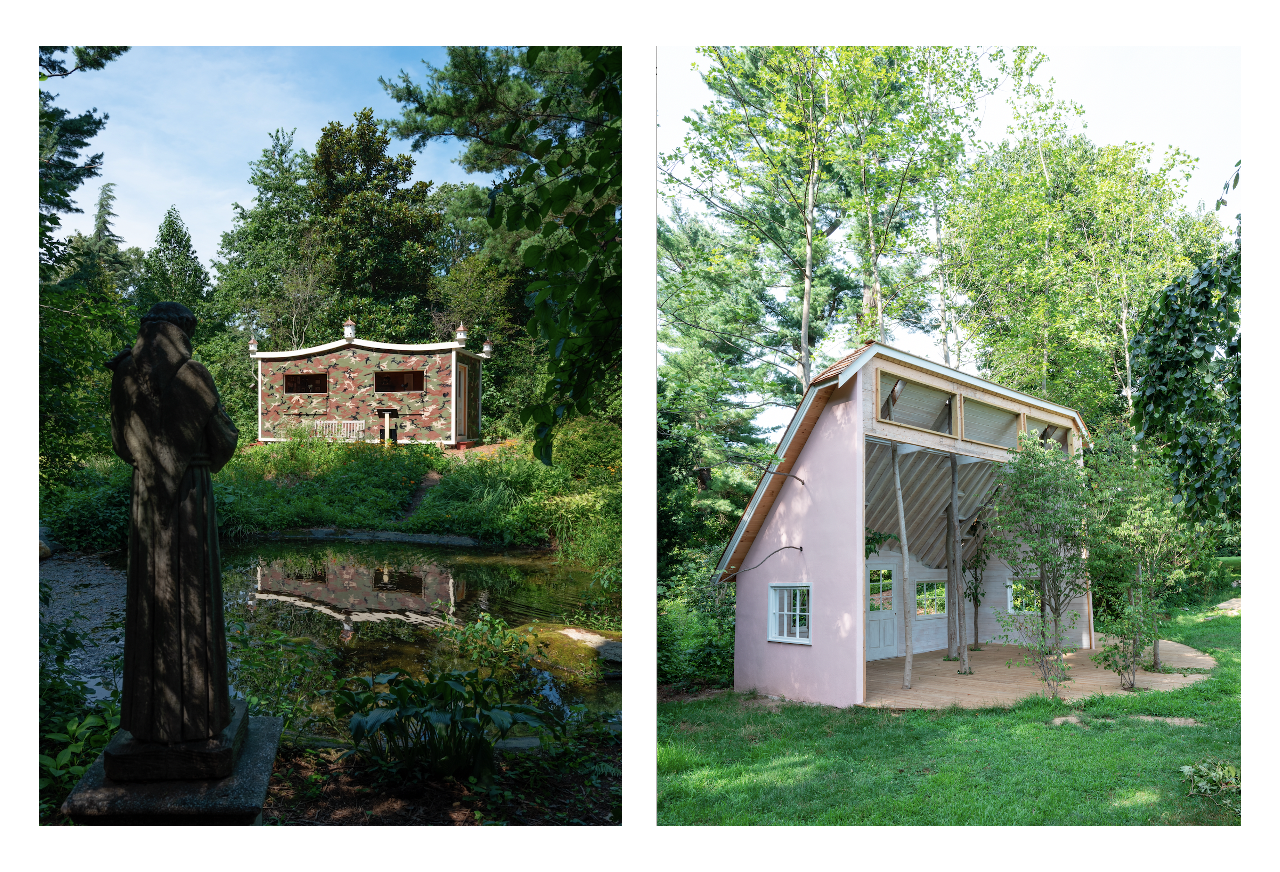The whimsical bird blinds created by David Brooks and Mark Dion in Planting Field’s bird sanctuary, creatively remind us of our complex relation to the aviary world. I arrived at the sanctuary last week disheartened that the day I had chosen was wet and windy. . . I thought the birds would see the day as miserable! But wrong I was. Birds cavorted and darted among the bushes and were clearly luxuriating in the ponds flooding with water.
Brooks’ Budding Bird Blind mirrors the architecture of the Coe children’s Playhouse near the Italian Garden; in its resemblance to a theater set it also underscores the double meaning of the word. The viewer stands or sits uncomfortably behind the façade watching the birds (the building has a front and two abbreviated sides); trees interrupt the space shooting through intentional holes in the roof and the windows are paned but glassless. The structure shelters the birder from the bird’s vision yet provides no real “shelter.” It is a liminal “indoor” space. Rain pours into the blind watering the trees rooted there as well as drenching the watcher. The viewers recognize themselves in a stage set questioning whether they are the drama or are watching the drama. Who is the audience the birds or the humans?
Dion’s Posh Blind constructs a birder’s study in its most elegant form. Cozy chairs look out through windows that can shut out the weather or allow views of the birds. The visitor finds telescopes and binoculars, multitudes of birding books to aid identification, desks for writing up one’s observations, cupboards of books and porcelain birds, prints and biscuits and almost. . .hot tea. It is a fully human habitat, as wondrous to us as the bird’s habitat the Coe family created is to our feathered friends.
There are three creations, Brook’s, Dion’s and the Coes’. None includes anything careless or useless. These temporary structures remind us that birds come to Planting Fields, because it was designed—like the blind for a human—fully for them. It integrates an extraordinary range of water, trees, grasses, berries, bushes, and in season, flowers to provide a reprieve in the bird’s long journey south.
– Elizabeth Sawyer Press

